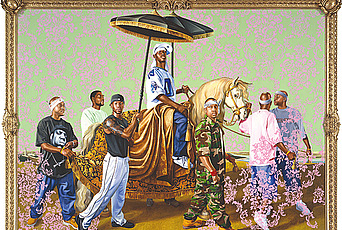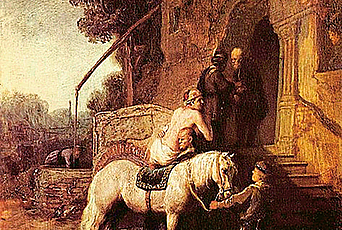Behold the Black Caiman: A Chronicle of Ayoreo Life

This ethnographic project and I have grown up together. It evolved through repeated returns over the course of forty-two months of fieldwork carried out in Bolivia and Paraguay between 2001 and 2013. Its focus has sharply changed since I began traveling to the Chaco as a twenty-one-year-old. From the outset, I was an active participant in representing Ayoreo humanity to fellow outsiders, most notably in two documentary films. Yet I soon came to feel that there was something profane about anthropology as commonly practiced in the Chaco. And Ayoreo-speaking people wouldn’t let me forget it. Unsettled by the process of making my second video during the aftermath of a 2004 “contact,” I resolved that a collaborative project was the only option for the immersive research that I began in 2006 among Totobiegosode—Ayoreo in northern Paraguay.
This elementary recognition turned out to be quite difficult to realize. Eventually I was permitted to stay with them under certain conditions, not least because I gladly offered myself as an immediate source of food, medicine, money, and most importantly, transport. At the time, the relatively remote communities with which I worked did not have access to a vehicle. The children named my old army ambulance Jochekai, the Giant Armadillo, and quickly bedecked its rearview mirror with gifts. My presence in the Chaco was as much political and economic as personal and intellectual. Invited to work as an “advisor” to a recently formed tribal organization, I also became a wedge between the Totobiegosode communities and an NGO that controlled the material sources of their daily existence. Early on, it was apparent that there were stark differences of opinion all around. Taking an active role in these daily negotiations gave me standing in the communities; it also made my relations with contracted experts strained and often conflictive. Totobiegosode leaders enlisted me alternately as ally, agitator, and foil to leverage slight openings in a constrained social space. Over the years, these relations thinned and thickened, dried out and grew up. In the process we all assumed forms impossible to foresee. This book, then, is equally a chronicle of lives shared and a genealogy of why this was only partially so.
I’d like to think that the woman I will call Tié is my friend, even though there is no word in her language for the absent kind of friendship I can offer.
She was one of a small band of Ayoreo-speaking people who emerged from the dwindling forests of northern Paraguay in March 2004, fleeing ranchers’ bulldozers and fearing for their lives. These seventeen people called themselves Areguede’urasade (“band of Areguede”) and formed part of the Totobiegosode (“People of the Place where the Collared Peccaries Ate Their Gardens”), the southernmost village confederation of the Ayoreode (“Human Beings”). Along with two other small bands that still roam the dense thickets of the Bolivia/Paraguay borderlands, they were the last of the forest-dwelling Ayoreo.
Startling photographs of these brown-skinned people made headlines around the world that spring. Experts jockeyed to declare this one of the final first contacts with isolated Indians. At first everyone wanted in, including me. When the first tremors of the event reached me, I was a second-year anthropology graduate student at New York University. I thought I understood something of Ayoreo people and the Chaco, as I’d already spent fourteen months living among and collaborating with northern Ayoreo-speaking people as a Fulbright scholar in Bolivia three years before. When I heard they’d come out, I couldn’t sleep. I rushed through coursework and film training, and by July I was headed south—as if to bear witness.
What does it mean to write or read yet another ethnographic account of the seeming destruction of yet another small group of South American Indians? What kind of humanity is possible for anyone once the spectacular upheavals of a twenty-first-century “first contact” supposedly subside?
For many earlier anthropologists, like Claude Lévi-Strauss and Pierre Clastres, the answer was clear. So-called primitive society was imagined to be intrinsically opposed to Western civilization. It was, in Clastres’s famous writings, a “society against the state.” Clastres argued that “primitive man” refused the political and economic forms required for modern statecraft. For Clastres, the modern state was defined by its centralizing drive to erase and homogenize difference while primitive society was outward-facing and deeply antiauthoritarian. Where the modern state was “the One,” primitive society was the unassumable “Multiple” that existed beyond it. This primitive multiplicity, for Clastres, was “the conceptual embodiment of the thesis that another world was possible.” Yet Clastres and many of his contemporaries imagined this possibility as an ever retreating horizon. Primitive societies, he was convinced, were doomed to disappear before the violent onslaught of capitalist modernity.
Contact was supposed to initiate such disappearances. Because it meant the inevitable loss of this multiplicity, contact made the South American tropics tristes, a zone of mourning and what Renato Rosaldo calls “imperialist nostalgia.” In the words of Alfred Métraux, the great ethnographer of the Chaco, “For us to be able to study a primitive society, it must already be starting to disintegrate.” Such sentiments oriented ethnography. Clastres argued that what was needed was an anthropology capable of interrupting the surrender to singularity by taking seriously the radical otherness of primitive society and experience. It was a political anthropology based on a search for the primitive.
If this binary schema was correct, then the events of 2004 were devastatingly clear. They followed a well-worn script of social disintegration and the loss of future possibility. To be sure, many ethnographers have made exactly this argument. As Ticio Escobar put it long before he became Paraguay’s minister of culture, the Totobiegosode Ayoreo are victims of “ethnocide” or “the violent extermination of culture.” This process of contact “converts their members into caricatures of Westerners and sends them to a marginal underworld where they end as beings that have no place in their culture nor the culture of others.” Escobar argued that this process transformed contemporary Ayoreo-speaking people into a peculiar form of nonhumanity, a population whose “men wander as shadows of themselves through work camps or colonies … and their women, defeated, arrive at the towns to give themselves up as semi-slaves or prostitutes.” For Escobar, Clastres, and others, the supposed death of culture also meant a wider social death. It was believed to manifest in affective or psycho-pathologies, including “all of the side effects of losing one’s cultural identity: alcoholism, social disorganization, apathy, violence, suicide, prostitution, and marginalization.” In this reckoning, the values of culture and life were conflated. We do not need to read or write about the contact with the Areguede’urasade; we only need to properly mourn their passing.
At first, it was tempting to see traces of decay everywhere I turned. No matter where I went in the Chaco, I found that Ayoreo were disenfranchised as subhuman matter out of place: cursed, subordinated, neither this nor that. On both sides of the Bolivia/Paraguay border, Ayoreo-speaking people were the poorest and most marginalized of any Indigenous people in a region where camps of dispossessed Natives lined the roads and Indians were still held in conditions described as slavery. They confronted a mosaic of violence: enslavement, massacres, murder, and rape were venerable traditions. Many of the girls exchanged sex for money on the peripheries of cities or towns. The pet parrots in one settlement imitated tubercular coughing. People seemed to alternate between nervous motion and opaque waiting. Many sought escape by whatever means were near at hand: prayers, disco music, shoe glue. The violence was unavoidable. Everyone got tangled up in it; we all mouthed its lines.
Fieldwork meant confronting situations I was not equipped to deal with in rational ways, from blunt-force brutality to incredible grace. There was no coherent whole to master or become fluent in. The closest things I found to Ayoreo cultural institutions were those described so confidently in books or pieced together from elders’ memories and sold to visiting anthropologists. Sociality swung wildly between extremes of collective affiliation and agonistic striving for dominance. Merely surviving required a thick skin; I never quite got used to the fact that conflict and brinksmanship were defining parts of everyday personhood.
Yet the more time I spent in the Chaco, the more clear it became that death was only part of the story. What appeared initially as losses were, on more thorough acquaintance, zones of intense translation, rational calculus, and partial potentials for Ayoreo-speaking people. If such sensibilities reflected a failure, it was the failure of the New World to deliver on its promise and the failure of others to take seriously the kinds of possibility these emergent attitudes contained. By the time I left the Areguede’urasade in 2004, I was increasingly convinced that primitivist narratives of culture death were not any kind of answer at all. Rather, they were part of the problem. I wondered: How did the New People come to inhabit a world in which their disintegration was foretold? How were classic accounts of contact revised and refracted in twenty-first-century contexts? At which points did the kinds of self-fashioning by Ayoreo and by ethnographers fall apart, and at which did they unexpectedly merge?

